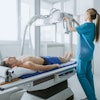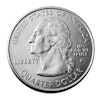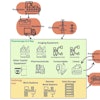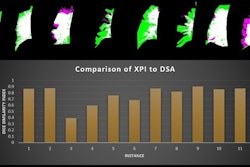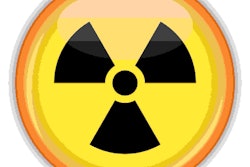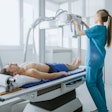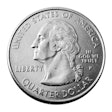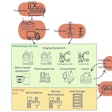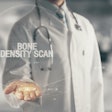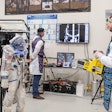A team of researchers at Boston Children’s Hospital has developed an age-specific dose catalog for estimating radiation exposure to children from diagnostic and interventional radiology fluoroscopy procedures.
The dose catalog is based on all diagnostic fluoroscopy exams and interventional radiology (IR) procedures performed over nine years at Boston Children’s and is hoped to ensure consistency of practice and ensure patient safety, noted lead author Andy LaBella, MD, a medical physicist, and colleagues.
“Like all x-ray-based imaging modalities, fluoroscopy carries with it the inherent risk of stochastic (cancer) and deterministic (skin damage) radiation effects,” the group wrote, in an article published January 14 in Radiology.
Fluoroscopy is a powerful imaging modality that enables real-time visualization of patient anatomic and physiologic characteristics, the authors explained. Many applications have been developed for fluoroscopy, including routine medical diagnosis in radiology and noninvasive fluoroscopically guided procedures in IR, they wrote.
However, despite cancer risk from radiation being much higher in children than adults, no studies exist that explore organ-specific dose per fluoroscopy examination type, they noted.
To that end, the group included 11,536 individual diagnostic fluoroscopy procedures and 8,017 individual IR procedures performed at their hospital between October 2014 and March 2023. They analyzed metrics to estimate age-specific effective dose per IR procedure type and diagnostic fluoroscopy exam.
Key findings included the following:
- Median effective dose values per examination type ranged from 0.0007 to 3.9 mSv for interventional radiology (24 procedure types) and 0.001 to 0.44 mSv for diagnostic fluoroscopy (18 examination types).
- Median dose-area product (DAP)-to-effective dose conversion factors per exam type ranged from 0.001 to 0.87 mSv/Gy per square centimeter for interventional procedures and 0.04 to 2.48 mSv/Gy per square centimeter for diagnostic examinations.
- Age-specific effective dose and DAP-to-effective dose conversion factors decreased exponentially as a function of age across all examination types.
“Having a repeatable and robust method for effective dose estimation may improve long-term patient outcomes, especially in pediatric hospitals where dose optimization is of utmost concern,” the authors wrote.
Ultimately, they noted that the study may be used as a reference for other practices seeking typical dose and examination metrics for various fluoroscopy procedures and may serve as the basis for future related studies.
In an accompanying editorial, David Borrego, PhD, of U.S. Environmental Protection Agency in Washington, DC, and Stephen Balter, PhD, of Columbia University Medical Center in New York City, noted that the mean reported dose in the study for both diagnostic and interventional procedures was less than 1 mSv.
For patients not undergoing multiple complex procedures, this amount is less than the difference in annual natural background radiation exposure between living on the Atlantic Coast and living at elevation in the Colorado Plateau, they noted.
“This factoid may provide a useful discussion point when discussing relative risk with the parents of a pediatric patient,” Borrego and Balter wrote.
The full article can be found here.
